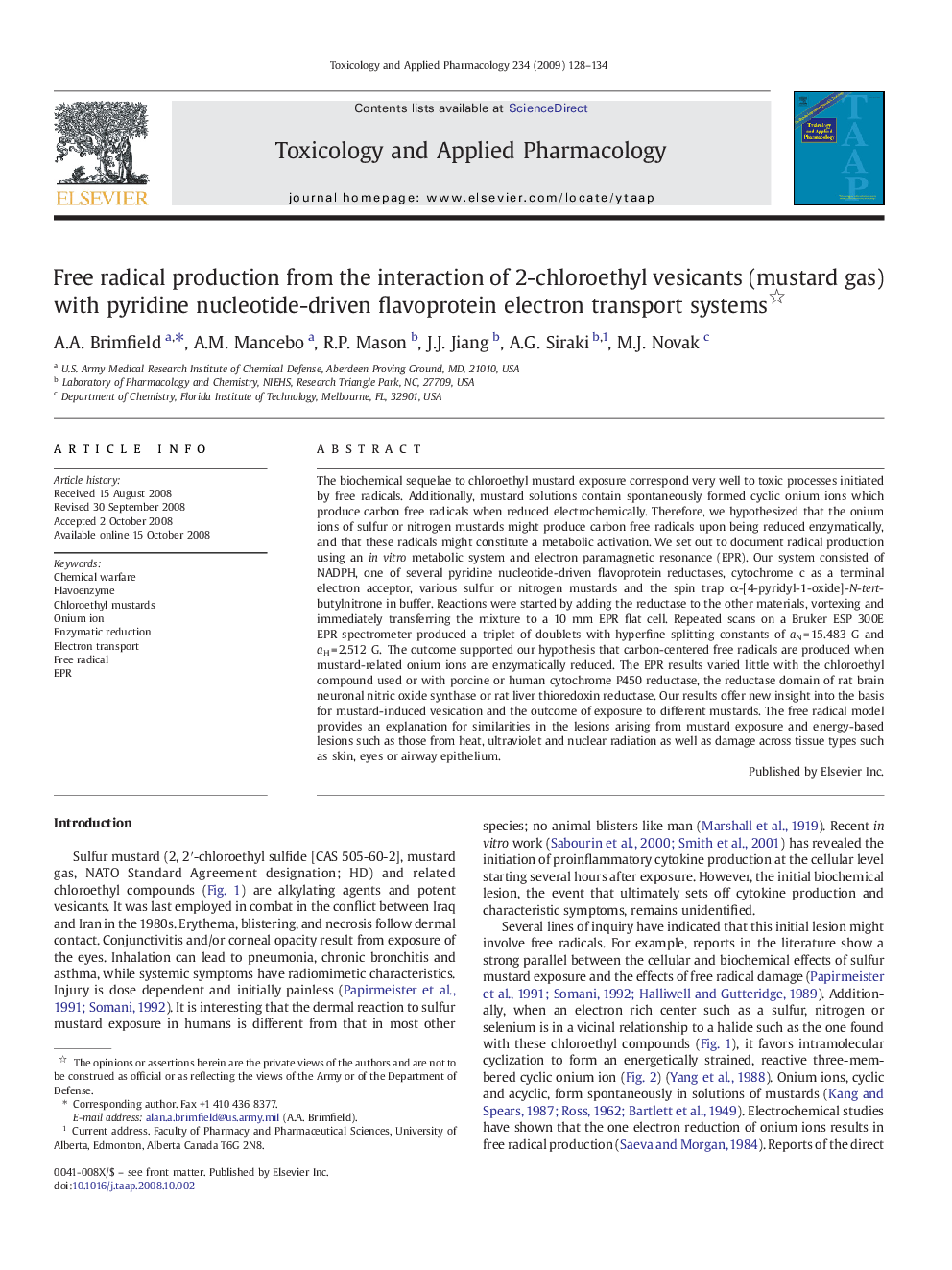| کد مقاله | کد نشریه | سال انتشار | مقاله انگلیسی | نسخه تمام متن |
|---|---|---|---|---|
| 2570827 | 1128604 | 2009 | 7 صفحه PDF | دانلود رایگان |
عنوان انگلیسی مقاله ISI
Free radical production from the interaction of 2-chloroethyl vesicants (mustard gas) with pyridine nucleotide-driven flavoprotein electron transport systems
دانلود مقاله + سفارش ترجمه
دانلود مقاله ISI انگلیسی
رایگان برای ایرانیان
کلمات کلیدی
موضوعات مرتبط
علوم زیستی و بیوفناوری
علوم محیط زیست
بهداشت، سم شناسی و جهش زایی
پیش نمایش صفحه اول مقاله

چکیده انگلیسی
The biochemical sequelae to chloroethyl mustard exposure correspond very well to toxic processes initiated by free radicals. Additionally, mustard solutions contain spontaneously formed cyclic onium ions which produce carbon free radicals when reduced electrochemically. Therefore, we hypothesized that the onium ions of sulfur or nitrogen mustards might produce carbon free radicals upon being reduced enzymatically, and that these radicals might constitute a metabolic activation. We set out to document radical production using an in vitro metabolic system and electron paramagnetic resonance (EPR). Our system consisted of NADPH, one of several pyridine nucleotide-driven flavoprotein reductases, cytochrome c as a terminal electron acceptor, various sulfur or nitrogen mustards and the spin trap α-[4-pyridyl-1-oxide]-N-tert-butylnitrone in buffer. Reactions were started by adding the reductase to the other materials, vortexing and immediately transferring the mixture to a 10 mm EPR flat cell. Repeated scans on a Bruker ESP 300E EPR spectrometer produced a triplet of doublets with hyperfine splitting constants of aN = 15.483 G and aH = 2.512 G. The outcome supported our hypothesis that carbon-centered free radicals are produced when mustard-related onium ions are enzymatically reduced. The EPR results varied little with the chloroethyl compound used or with porcine or human cytochrome P450 reductase, the reductase domain of rat brain neuronal nitric oxide synthase or rat liver thioredoxin reductase. Our results offer new insight into the basis for mustard-induced vesication and the outcome of exposure to different mustards. The free radical model provides an explanation for similarities in the lesions arising from mustard exposure and energy-based lesions such as those from heat, ultraviolet and nuclear radiation as well as damage across tissue types such as skin, eyes or airway epithelium.
ناشر
Database: Elsevier - ScienceDirect (ساینس دایرکت)
Journal: Toxicology and Applied Pharmacology - Volume 234, Issue 1, 1 January 2009, Pages 128-134
Journal: Toxicology and Applied Pharmacology - Volume 234, Issue 1, 1 January 2009, Pages 128-134
نویسندگان
A.A. Brimfield, A.M. Mancebo, R.P. Mason, J.J. Jiang, A.G. Siraki, M.J. Novak,